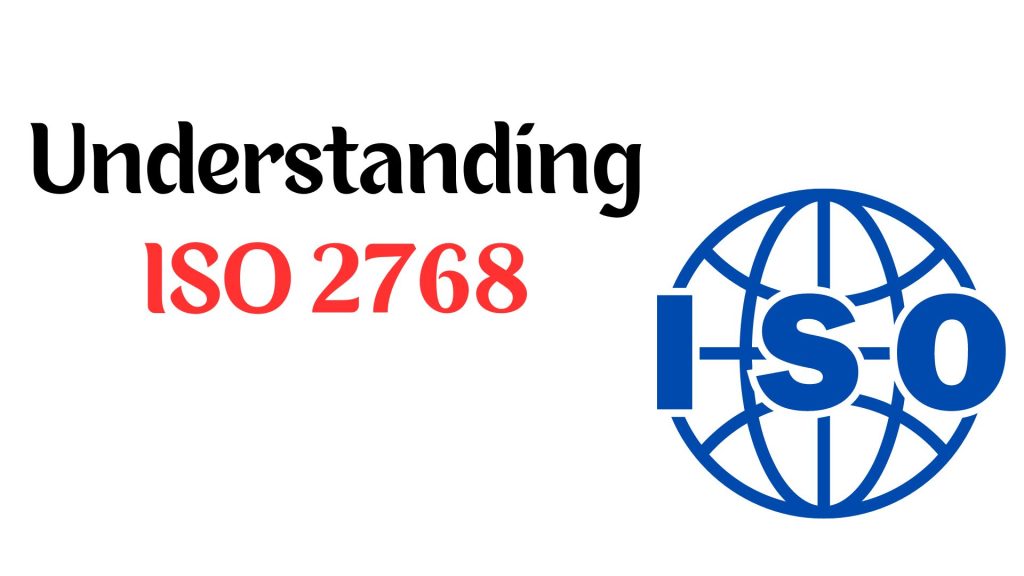Machining operations perform most of the world’s manufacturing processes. They either create the final product from scratch or make the tools needed to manufacture it. Therefore, understanding machining operations is key to successfully completing your next manufacturing project.
This article details the different types of machining operations. Based on the information provided, you can choose the one that best suits your needs.
What is Machining?
Machining is a manufacturing process that removes material in a controlled manner to produce the desired part. For this reason, machining is also known as a subtractive manufacturing process. The workpiece is always larger than the required part. Machining is more precise than alternatives such as additive manufacturing.
What are the different types of machining operations?
There are many different types of machining operations to meet different needs. These different types of machining operations are
Conventional machining processes
Conventional machining processes are the traditional machining processes. These operations use physical tools such as cutters and drills to perform the machining operation. The different types of conventional machining processes are
Turning
In turning, a workpiece rotates about a central axis. The cutting tool is stationary and removes material symmetrically from the workpiece surface. Turning operations are generally performed on cylindrical and tapered objects. The workpiece may be hollow or solid. Some applications of the turning process include
Engine parts
Machine parts
Shafts
Bores
Grooves
Threads
Tapers
Drilling
Drilling
Drilling is the process of making holes in a workpiece. The holes are used for screws or for aesthetic purposes. Drilling is the most common type of machining. Drilling is performed on a drill press. Drill presses can be manually operated or attached to a CNC machine. The cutting tool is called a drill. Applications of a drill press are
Make holes for screws
Making threads
Drilling holes for aesthetics
Boring
Boring is used to enlarge a pre-drilled hole. The enlargement is done with a single-point cutting tool. A small hole is first drilled using a drill press or other alternative. Boring tools can be mounted on lathes, milling machines and drill presses. Applications of boring are:
Engine shafts
Gun cylinders
Turbine cylinders
Reaming
Reaming is used to improve the quality and accuracy of holes. Reaming is used for secondary finishing of workpiece holes. It can make the hole diameter more accurate, round and with a smooth surface finish. Reaming uses multi-point cutting tools. The reaming machine is called a reamer. The reaming process follows holes made by drilling or boring. Applications of reaming are:
Aircraft components
Engine parts
Fuselage
Landing gear
Milling
The milling process uses a high-speed rotating cutting tool against a stationary workpiece. It is performed on an automated or manual milling machine. The cutting tools in milling machines have different shapes. Based on the variation of cutting tools, there are many different types of milling operations. Common examples are end milling machine, face milling machine, elbow milling machine, etc. Applications of milling machines are
Slotting
Contouring
Gear cutting
Threading
Grinding
Grinding is a secondary finishing process used to improve surface finish. It uses a rotating abrasive disc called a grinding wheel. Grinding processes can smooth out imperfections caused by other machining processes on a workpiece. Grinding can also improve the dimensional accuracy of a workpiece. Applications of the grinding machining process include
Surface finishing
Descaling
Deburring
Precision machining
Threading
Tapping is used to create internal threads in the workpiece. The cutting tool itself is called a tap. Taps can be cylindrical or conical in shape. The tap rotates and moves linearly inside the workpiece. This results in thread formation on the internal periphery of the workpiece. Holes are pre-drilled on the workpiece by drilling or boring. Applications of tapping are:
Threads for screws and bolts
Plumbing
Assembly of parts
Planing
Planing is used to machine an entire surface in a single pass. Planing machines can smooth an entire surface of a workpiece. It can also create inclined surfaces. Planing cuts can also create niche features on surfaces. Applications of planing are:
Woodworking
Dovetail joints
Making slots and grooves
Creating accurate flat surfaces
Knurling
Knurling is a surface finishing operation. It creates a pattern on the surface of the part. The pattern can be vertical lines, horizontal lines or a criss-cross pattern. Knurling can be done for aesthetic or practical reasons. It uses a knurling pin that is rolled against the workpiece surface. Applications of knurling are:
Making handles on tools such as hammers
Aesthetic appeal
Sawing
Sawing uses a cutting tool to cut through the workpiece. The cutting tool can be abrasive or have toothed bands on the blade. Sawing is used to cut a workpiece into small pieces. It is not as precise as other machining processes. Applications of sawing are:
Woodworking
Die making
Metal fabrication
Shaping
A forming machine is a quick way to change the basic shape of a workpiece. It uses a reciprocating mechanism between the cutting tool and the workpiece. The workpiece moves back and forth against the cutting tool. Shaping can produce flat surfaces, slopes, and even curved surfaces. Shaping applications include
Making internal spline holes
Producing flat surfaces
Gears
Dovetail joints
Keyways
Broaching
Broaching uses a toothed cutting tool to remove material from a workpiece. The tool used in broaching is called a broach. Broaching removes a minimal amount of material from a workpiece in a single pass. It is used to create niche features in a workpiece. Broaching commonly produces parts such as
Keyholes
Splines
Gears
Slots
Lapping
The lapping process is used for secondary finishing of a workpiece. In lapping, the workpiece surface rubs against the lap plate. An abrasive paste or powder is placed between the two surfaces. Lapping averages the rough features of the workpiece surfaces, resulting in smooth edges. The use of lapping is to:
Create truly flat surfaces with high accuracy
Non-Conventional Machining Process
Non-conventional machining processes do not use traditional cutting tools. Instead, these machining techniques use heat or force to erode material. Non-conventional machining processes are more modern with high precision. Let us go through these different types of machining:
Electrical Discharge Machining (EDM)
Electrical Discharge Machining (EDM) uses high-voltage frequency electrical pulses to cut the workpiece. The pulses create electric arcs that melt the material at the desired location. The result is a highly accurate cut. This method can only be used to cut conductive materials. Applications of electrical discharge machining include
Mold making
Die making
Punching
Tooling
Surgical equipment
Chemical Machining
Chemical machining uses chemical reactions to remove material from the workpiece. This process is also known as etching. The material is removed by immersing the workpiece in a chemical agent. The workpiece is masked and the areas to be removed are left unmasked. This process can produce both deep cuts and engravings. Applications of the chemical machining process include
Machining of ultra-thin parts
Automotive parts
Aircraft parts
Fine sieves
Wire mesh
Machining difficult-to-handle parts
Electrochemical Machining (ECM)
Electrochemical machining combines the chemical machining process with electrical energy. This process is the opposite of electroplating. This process is independent of surface hardness and machinability. Therefore, it can be used to machine hard materials with ease. It is also good for machining materials with poor machinability. Applications for ECM are
Multiple hole drilling
Die sinking
Profiling
Contouring
Turbine blades
Abrasive Jet Machining
Abrasive jet machining uses abrasive particles to remove material from a workpiece. A high velocity gas stream provides energy to the abrasive. Abrasive jet machining is known by many other names such as pencil blasting, abrasive micro-abrasive blasting and micro-abrasive blasting. Applications of Abrasive Jet Machining include
Cutting heat sensitive materials
Deflashing
Cleaning work surfaces
Deburring
Glass frosting
Ultrasonic Machining
Ultrasonic machining uses a high-frequency vibrating tool to remove workpiece material. An abrasive material is placed between the tool and the workpiece. The abrasive is mixed with water to form a fine abrasive paste. The high frequency vibrating tool uses the abrasive paste on the tip to remove the material. Applications of ultrasonic machining include
Machining of sensitive materials
Glass cutting
Optical equipment
Electrical equipment
Laser Beam Machining (LBM)
Laser Beam Machining (LBM)
Laser beam machining uses a high-energy beam of light to melt and remove workpiece material. LBM operations, like laser cutting, can be performed on all types of materials. These types of machining operations are typically applied to materials with poor conductivity due to the limitations of EDM and other electrical methods. Applications of LBM machining include
Cladding
Surface treatment
Marking
Medical equipment
Marine industry
Automotive
Aircraft Industry
Water Jet Machining
Waterjet machining is a cold cutting process. It uses the force of high-pressure water in a very narrow stream. The water jet can easily pass through both hard and soft materials. Abrasive particles are often added to the water to speed up the cutting process. Applications of water jet machining include
Surgical equipment
Automotive parts
Dental implants
Prototyping
RESEARCH AND DEVELOPMENT
Ion Beam Machining (IBM)
Ion Beam Machining is a surface treatment process. It changes the structure of the workpiece at the molecular level. Ions are accelerated and made to collide with the workpiece. The high velocity ions alter the material molecules on the workpiece surface. Applications of the ion beam machining process are
Etching in electronic industry
Optical industry
Fine wire drawing
Plasma Arc Machining (PAM)
Plasma arc machining uses a high-velocity ionized gas. The ionized gas creates a plasma arc that melts the workpiece at the desired location. The high-speed air stream blows the molten material away. The result is a clean and highly accurate cut. Plasma arc machining applications include
Cutting of stainless steel alloys
Profile cutting of metals
Machining of difficult-to-machine materials
Micro Machining
Micromachining is a precision engineering process that creates components on the micron scale. It involves a variety of techniques, each tailored to specific materials and applications, to produce intricate and detailed parts. Here’s an overview of common micromachining processes and their applications:
Micro Milling: Similar to conventional milling, but on a much smaller scale. Micro milling machines use tiny cutters to carve out complex shapes and details. This method is ideal for creating precise molds, dies and intricate parts in metals and polymers.
Micro turning: The workpiece is rotated while a stationary cutting tool removes material. It’s particularly effective for producing small, cylindrical parts such as pins or shafts, which are commonly used in medical devices and precision instruments.
Micro-drilling: Essential for creating extremely small holes with high precision. This technique is critical in the manufacture of electronic components, such as printed circuit boards, where tiny vias and holes are required.
Micro-Grinding: Uses fine abrasive particles, making it suitable for hard materials that require smooth surfaces. It’s often used for optical components, such as lenses and mirrors, where surface finish and shape accuracy are critical.
Laser micromachining: Uses highly focused laser beams for precise material removal or modification. This process is versatile and is used for micro-cutting, engraving and marking in a variety of materials, including metals, ceramics and polymers.
Electrical Discharge Machining (EDM): Uses electrical sparks to shape hard materials, perfect for creating intricate designs and shapes that are difficult to achieve with mechanical methods.
Chemical and Electrochemical Machining: These processes use controlled chemical or electrochemical reactions to etch or dissolve material. They are particularly useful for creating complex shapes in difficult-to-machine materials with minimal stress on the part.
Precision Machining
Precision machining is a process used to remove material from a workpiece while maintaining tight tolerances. Precision machine tools typically used in this process include CNC mills, lathes and grinders. The precision machining process is critical for producing intricate parts with a high degree of accuracy and smooth finishes, often to tolerances measured in micrometers or even nanometers.
Major applications of precision machining include
Aerospace components: High-precision parts such as turbine blades, engine components and structural elements.
Medical devices: Surgical tools, implants and orthopedic devices that require tight tolerances.
Automotive parts: Engine components, transmission parts and suspension components that require high precision for optimum performance.
Electronics: Components such as connectors, heat sinks and enclosures where precise dimensions are critical.
Custom Machinery: Custom components for specialized machinery in a variety of industries.
Defense and Military: High-precision parts for defense equipment, including components for weapons systems and vehicles.
Optical Instruments: Components for cameras, microscopes and telescopes, where high precision is essential for optimal performance.
What is the difference between conventional and non-conventional machining processes?
What is the difference between conventional machining processes and non-conventional machining processes?
There are many differences between conventional machining and non-conventional machining processes. Here is a full list of these differences:
Cutting Tools
Conventional machining processes rely on metal alloy cutting tools. Commonly used cutting tools are made of carbide or high-speed steel. However, non-conventional machining relies on other means. For example, water power, electrical heat, chemical reactions, or the friction of abrasive particles may be used to create the cutting action.
Complex shapes
Conventional machining uses a solid cutting tool. As a result, it is limited in the types of shapes it can produce. Typically, these methods are used to machine simple shapes. However, non-conventional machining can machine highly complex shapes.
Material selection
A conventional machining operation can be difficult when machining materials with poor machinability. A hard material will cause excessive tool wear with these machining techniques. However, non-conventional machining operations can easily remove material from the toughest workpiece. Therefore, these processes are preferred for materials with high hardness or poor machinability.
Accuracy
A conventional machining process has limited accuracy. This is due to limitations on the minimum thickness of the cutting tool. However, non-conventional machining processes are highly accurate. This is because the thickness of the laser, water or electric arc can be reduced to a microscopic level.
Material removal rate
The material removal rate in conventional machining is higher. This is because the tool has more contact with the workpiece. It also results in faster tool wear. In non-conventional processes, the material removal rate is slower.
Cost
Conventional machining is less expensive than non-conventional alternatives. Nonconventional machining relies on complex equipment that requires a large initial investment. In addition, non-conventional machining requires a skilled operator. The conventional machining process is usually simple and does not require special operator skills.
Cutting Speed
Conventional cutting processes are faster than non-conventional options. This is because the cutting tool can contact and remove a large area of the workpiece. Non-conventional methods must melt or erode the workpiece at the particle level. This results in a slower cutting speed.
Which machining process is more accurate?
The non-conventional machining process is generally much more accurate than conventional alternatives. In non-conventional machining, the thickness of the cutting medium can be reduced to extreme proportions. For example, the laser beam or electric arc is smaller than the thickness of a human hair. This results in extremely precise cuts with small kerf widths.
Endnotes
Conventional and non-conventional machining can provide better results than any alternative. The choice between different types of machining depends on priorities such as cost, precision and the cutting speed you require. Based on the information presented above, you can decide which machining operation will provide the best result for your needs.
Frequently Asked Questions
Here are answers to some common questions about the different types of machining operations:
What is the most common machining operation?
Drilling is the most common machining operation. It is used as a secondary operation after every other operation. Similarly, grinding is also very common due to its secondary machining application. Among the primary operations, turning and milling are very common.
Disclaimer of Warranty
The contents of this website are for informational purposes only. MY Prototyping makes no representations or warranties of any kind, express or implied, as to the accuracy, completeness or validity of the information. Any performance parameters, geometric tolerances, specific design features, quality and types of materials, or processes should not be inferred to represent what will be supplied by third party suppliers or manufacturers through MY Prototyping’s network. Buyers seeking instant quotes for parts are responsible for defining the specific requirements for those parts. Please see our Terms and Conditions for more information.






